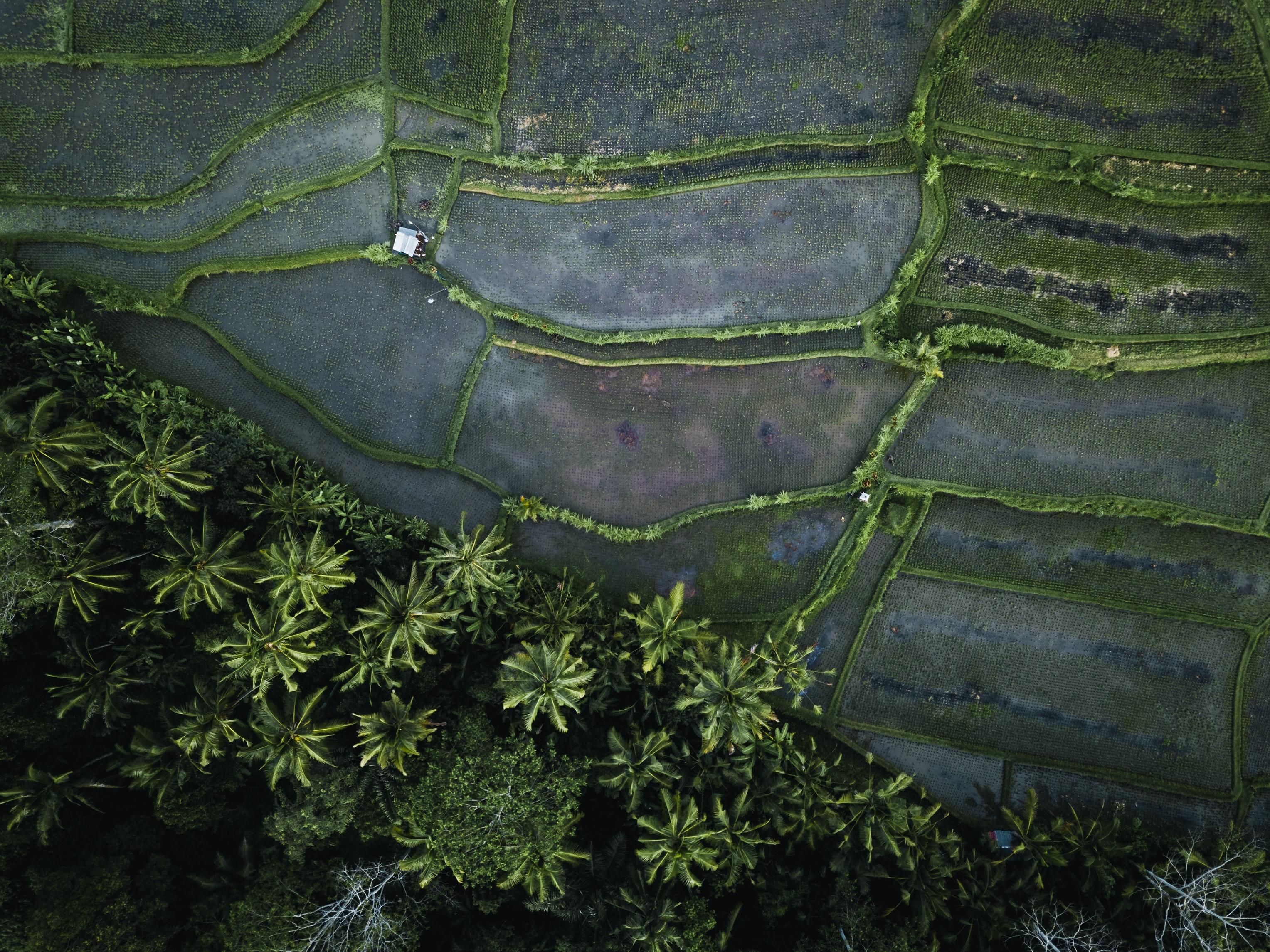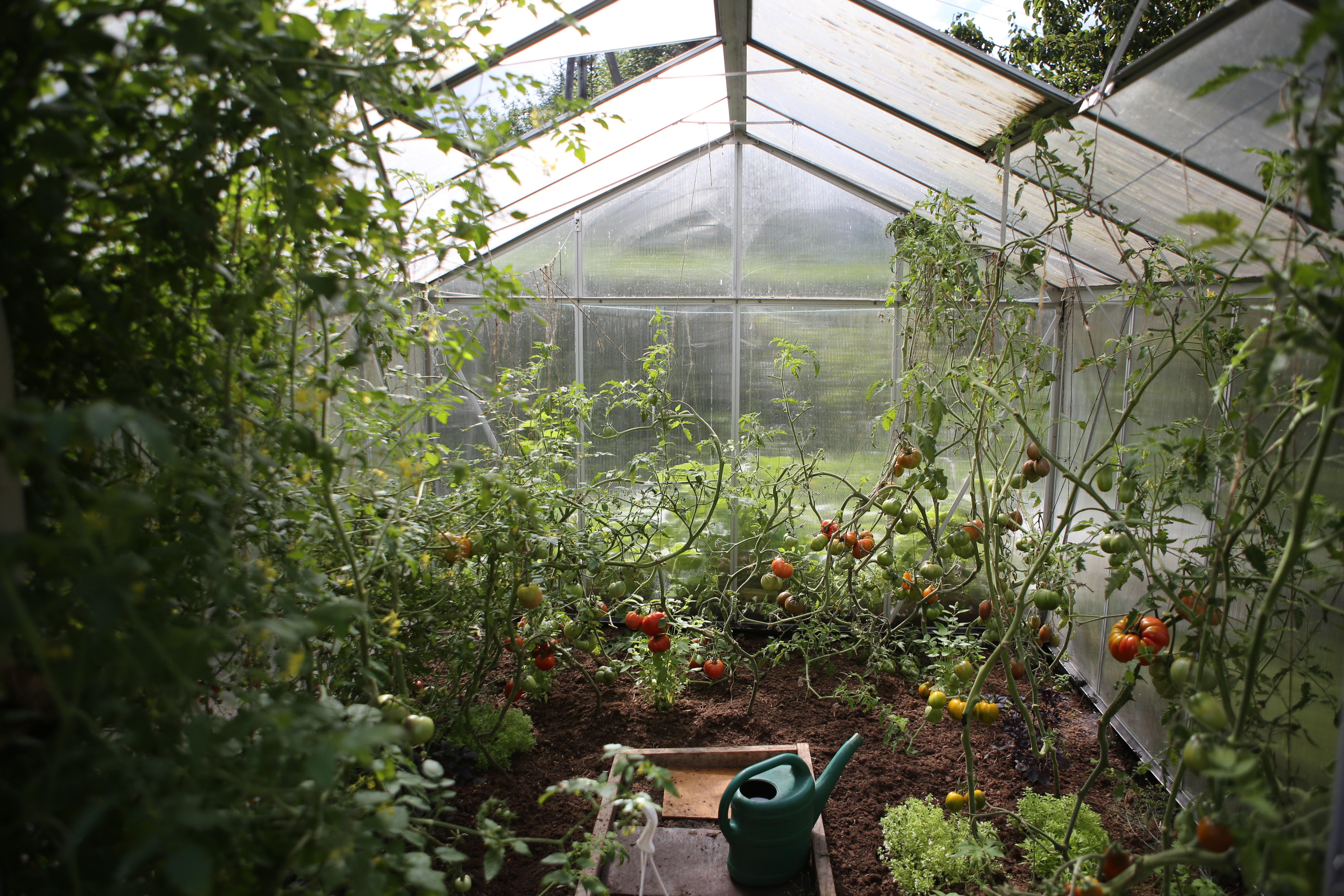CO₂ Intensive Foods: What we eat is what we emit
Can it be that only animal products have a bad balance for the climate? Are you wondering about all the other foods? Indeed, there is a variety of foods that can harm our climate in excessive amounts and that we should consume with caution. You'll be surprised at some of the products.

What makes for CO₂ intensity?
As explained and discussed in our blog post on animal products, land use, water consumption, and CO₂ emissions play a big role in transportation, but especially in production. The more land the production of food takes up, the less land can be used for cultivation, protection, and renaturation of important CO₂ sinks. CO₂ sinks absorb more CO₂ than they release. These are, for example, peatlands or forests. Water consumption is a factor we should consider, especially in water-scarce regions in the Global South, but also already in Southern Europe.
What is more CO₂ intensive - transport or manufacturing?
Contrary to expectations, only 6% of CO₂ emissions occur in the transportation of food. This is mainly because many foods are still transported from A to B by ship. If food would be transported by air, this would emit 50 times more greenhouse gases. 0.023 kilograms of carbon dioxide equivalents (CO₂e) per ton-kilometer* by sea compares with 1.13 kilograms of CO₂e by air. Therefore, food that comes to us by air should be avoided. This includes all foods that should be fresh and ripe, such as beans, asparagus, all soft fruits, mangoes, and also crabs, which are sent by plane to the Global South for crab-pulling.
Which products are particularly CO₂ intensive?
In general, animal products are still considered the most CO₂ intensive. A big surprise for many is the CO₂ balance of butter. Butter requires a lot of milk. This means a lot of cows have to be kept and fed. In the process, it's not just the animals themselves that emit harmful greenhouse gases 🐄💨. Feed production also has a considerable CO₂ footprint. Incidentally, a cow's poop mainly contains methane gas, a greenhouse gas that is 24 times more harmful to our climate than CO₂. All in all, it takes up to 24 kilograms of CO₂e to produce one kilo of butter, according to the German government's Council of Experts on the Environment.
"Incidentally, a cow's poop mainly contains methane gas, a greenhouse gas that is 24 times more harmful to our climate than CO₂."

On average, 8.5 kilograms of CO₂e are needed to produce one kilo of cheese. A valuable rule of thumb for the non-vegans among you is: The less fat the cheese contains, the smaller its CO₂ footprint. So some Camembert with 70 percent fat performs poorly here.
"The less fat the cheese contains, the smaller its CO₂ footprint."
While 18 kilograms of CO₂e are emitted for one kilogram of beef steak, the production of fresh vegetables produces an average of only 0.15 kilograms of CO₂e. Here, too, there are good and less good foods.
Plant-based foods, therefore, have a significantly lower CO₂ footprint. If you want to avoid animal products, you should balance your daily meals and eat proteins from plant-based foods. Find out what the top protein-rich foods from the plant world are in our next blog post.
Our favorite sin: Coffee ☕️
One cup of coffee emits up to 101.35g of CO₂. That's 10.7 kg of CO₂ per kilo of coffee. Since coffee is the German's favorite beverage, here are a few simple tips that you can use to make your coffee consumption a little more sustainable.
- Look for sustainability labels when buying coffee
- Ask yourself: Is every single coffee necessary? Especially the one that's been sitting on your table for hours, half drunk. Or the rest that's been chilling in the French press since this morning?
- Capsules? Nope, thanks!
- Try plant-based milk alternatives. Oat milk we recommend.
- Get coffee from manufacturers and roasters that use green energy.
- "Coffee to go": use reusable rather than disposable cups. (See Recup or KeepCup)
- Buy energy-efficient coffee machines.
- Turn off machines when not in use.
From far, far away it comes from the avocado. 🥑
With all its benefits, the beloved avocado has been a huge boom. Not only is it rich in healthy fatty acids, provides valuable vitamins, and is low in carbohydrates, it also helps us lose weight. Unfortunately, this is all almost too good to be true. Large areas of forest are cleared for avocado plantations - usually illegally. The ones who suffer are usually the socially weak and indigenous farmers and population groups. In addition, avocados are mainly grown in monocultures, partly artificially pollinated and sprayed with pesticides. A single avocado tree needs about 50 liters of water per day. For one kilo (about 4-5 fruits) about 1000-2000 liters of water are needed. This equals 5 to 10 full bathtubs full, of which you can shower for about a month, every day for 5 minutes. When the avocado then goes on its great journey towards Europe, avocados are not only shipped halfway around the globe but also have to be stored refrigerated the entire way. The avocado is thus a climate polluter, but still better for the environment than animal products.
"A single avocado tree needs about 50 liters of water per day. For one kilo (about 4-5 fruits) about 1000-2000 liters of water are needed. This equals 5 to 10 full bathtubs full, of which you can shower for about a month, every day for 5 minutes."
Fun fact: Not only cattle fart methane! Large amounts of methane are also released during rice cultivation. Especially in rice cultivation on wet rice fields, methane-producing microbes settle in the flooded rice fields and feed on the decomposing organic material. Since rice provides one-fifth of the calories consumed worldwide, rice cultivation in water basins is also responsible for at least 10% of agricultural greenhouse gas emissions. That's between 9% and 19% of global methane emissions. If you want to be on the safe side, look for rice varieties that are dry-farmed or where the rice fields are drained in phases after harvesting. However, these cultivation methods are less productive and more costly for rice farmers, and therefore naturally rarer. However, sustainable agricultural solutions are already on the horizon that can reduce greenhouse gas emissions from rice cultivation. Until then, it's better for those who can afford it financially to forgo rice or cut back on consumption.

Seasonal & Local
We can save a large portion of CO₂ in our diets by buying local and seasonal foods. A local diet reduces food transportation distances. And not only that! Buying local food seasonally also means we don't have to heat greenhouses in the European winter, so we can eat strawberries in January. In fact, many foods are only available in our supermarkets out of season because we grow them under artificial conditions in greenhouses. This is both an energy guzzler and a climate killer. To prevent this, we have provided you with a calendar that guides and directs you every time you go shopping by showing which foods are currently being harvested locally. By doing this, you're not only helping the climate, but you're also doing something for local farmers. Check it out and get inspired by seasonal, local foods:
🍏 HERE YOU FIND THE SEASONCALENDAR

Frozen foods
Sundays are brunch days. Our favorite is banana pancakes. But what goes on top? Typically, of course, lots of fruits and berries with a good layer of peanut butter. Blueberries, raspberries, and strawberries, however, are unfortunately not available seasonally for most of the year here in Europe and are therefore almost always flown in from distant warmer regions or grown in European greenhouses. Both are kind of crap. But what then? Take a look in the freezer of your supermarket. There you will almost always find delicious frozen fruit. Even berries and fruits of all kinds. But is that more sustainable? We checked that out for you. Let's take a closer look at the example of strawberries. 🍓
Strawberries are only seasonal in Germany in July. That is, exactly when we can pick them ourselves on the fields. One kilo of strawberries then has a CO₂ footprint of 0.3 CO₂e. If you buy strawberries freshly from the supermarket out of season, they have an average footprint of about 3.4 CO₂e. Frozen strawberries out of season draw energy for refrigeration, but much less than for greenhouses in winter. They only bring 0.7 CO₂e to the scales per kg. So that means it's better to buy frozen, if not seasonal and local.
Freeze-dried food
This way of preserving food is likely to increase in the coming years. But how does it work? While the food is frozen, a vacuum is created at the same time, drawing the liquid out of the food. Unfortunately, the process is still energy-intensive. However, there are already organic suppliers using renewable energy and the technology is constantly developing. The good thing about freeze-dried food: The process retains all vitamins, nutrients, and flavors, and the food has a long shelf life. So the food that is harvested but not sold or freshly processed does not have to be thrown away.
What can you do now?
Now and then take a look at the seasonal calendar we recommended above and get inspired by all the wonderful foods that are currently available seasonally and locally. Of course, this is easy, peezy, lemon squeezy in the summer, but please don't despair in the winter either. Swing over to frozen fruits that aren't grown in heated greenhouses.
Conscious consumption and enjoyment
As with everything that concerns our consumption, it is important to find the golden mean. Of course, you should still be able to enjoy a delicious rice dish now and then without having a bad conscience. But small steps make a big difference. And perhaps being aware of the CO₂ footprint of some foods will help you enjoy them less often, but much more consciously. It's a bit like Grandma's Christmas cookies - they're not always available, but taste all the better on Christmas 😉
With these tips and tricks, you can save a significant part of your monthly CO₂ footprint in no time at all. In May, you even get double Planet Coins for all challenges that relate to the topic of nutrition. We hope you have fun trying them out. If you have ideas for future blog posts or further questions, feel free to write us at hello@plan3t.one or contact us via Instagram, Facebook, or LinkedIn.
